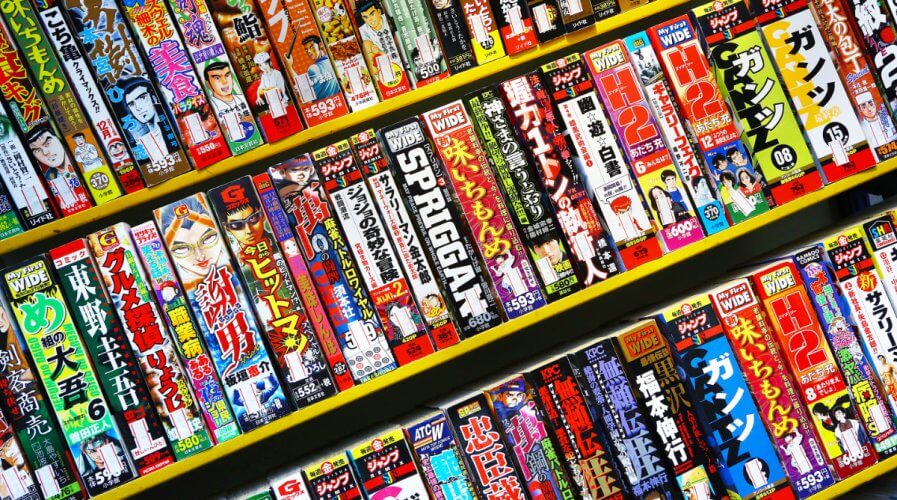
A range of Manga publications from a Tokyo street vendor’s stall. Source: Shutterstock
Piracy and IP in the age of digitized manga
ON FRIDAY, 13 April this year, the Japanese government introduced emergency measures which blocked three leading pirate sites (Mangamura, AniTube! and MioMio) which amongst other media, distributed manga content illegally.
Antipiracy group CODA (Content Overseas Distribution Association) estimated losses amounting to US$2.9 billion a year on the basis that one visit to one pirate manga site equals one lost manga purchase’s revenue.
Content creators and rights holders have found protecting their intellectual property (IP) problematic ever since the rise of the internet age in the early 1990s. An online presence, seen as a “must” initially, soon became a double-edged sword. Required for marketing and propagation, any digitized IP was quickly copied and republished by bodies acting for a variety of reasons: profit not least among them.
Digital Rights Management (DRM) is a difficult concept to implement as it represents a balance between freedom of consumption and piracy prevention. Difficult questions have arisen, including:
- Should DRM be hardware-based, specifically, should the chips at the heart of devices prevent unrecognized media being played?
- Certificate Authority confirmation of a user’s right to play or stream media is complicated to implement on a large scale, making certain protections problematic for smaller creative companies.
- Placing media in the hands of content distribution networks (CDNs) adds a layer of cost and removes total rights control from the creators.
- Can the balance between individual freedoms and the right of content owners to charge be maintained? If a consumer buys a piece of media, can they copy it to other devices they own without further charges?
Japan’s site-blocking efforts have raised some controversy in the country, as its constitution and Telecommunications Business Act both contain “no censorship” clauses which imply site blocking could be ruled illegal.
Furthermore, it is also against the law in Japan to inspect individual internet users’ communications; some observers have argued that individual persons’ internet histories need to be investigated if effective anti-piracy measures are to be put in place – an illegal act.
In the past, bit torrenting sites and repositories of pirated material online have been prosecuted with only limited success. End-users, enough of who are morally agnostic enough to consume illegal media, are rarely admonished, if at all.
Perhaps the answer lies in legislation and the requirement of quasi-national digital bodies like ISPs to act. The Japanese government’s decision was fully supported by domestic internet giants and main ISPs, NTT Communications, NTT Docomo, and NTT Plala. But in general, monitoring traffic, intelligently adapting algorithms and informing the authorities of transgressions all costs money – and who will bear that cost?
The Japanese government is thought to have acted in order to protect the country’s domestic manga creators, recognizing their social and artistic endeavors as being worth risking the wrath of freedom of information activists.
It is interesting to note that few other countries seem willing to protect their indigenous artists’ materials to this extent.
Many national authorities are seemingly powerless to protect their counties’ movie creators’ rights, and IP is still subject to very high levels of piracy, with no Japanese-style government-backed action to curtail specific pirate activity.
No-one appears to want to be responsible for stopping infringements of intellectual property, and everyone is, to some extent, affected by it. Intellectual property owners have to look after their own wares for the present, with even government actions such as those in Japan falling foul (potentially) of the law.
READ MORE
- Ethical AI: The renewed importance of safeguarding data and customer privacy in Generative AI applications
- How Japan balances AI-driven opportunities with cybersecurity needs
- Deploying SASE: Benchmarking your approach
- Insurance everywhere all at once: the digital transformation of the APAC insurance industry
- Google parent Alphabet eyes HubSpot: A potential acquisition shaping the future of CRM




